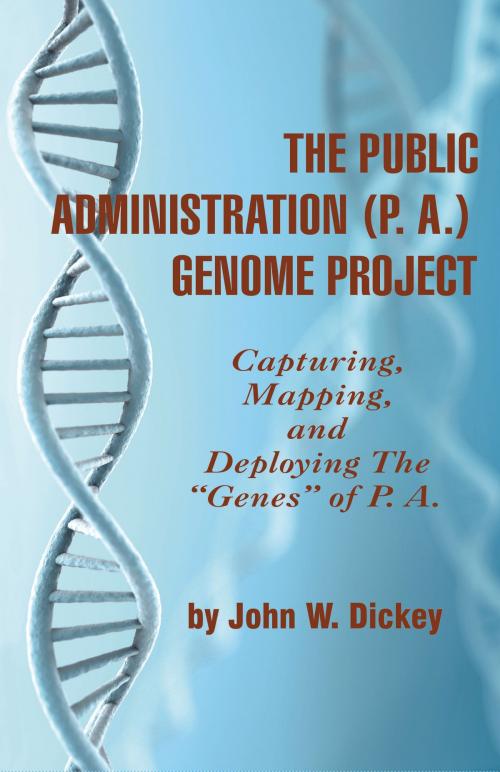The Public Administration (P. A.) Genome Project
Capturing, Mapping, and Deploying the "Genes" of P. A.
Nonfiction, Social & Cultural Studies, Political Science, Government, Public Affairs & Administration, Business & Finance, Management & Leadership, Management, Reference & Language, Education & Teaching| Author: | John W. Dickey | ISBN: | 9781617358432 |
| Publisher: | Information Age Publishing | Publication: | October 1, 2009 |
| Imprint: | Information Age Publishing | Language: | English |
| Author: | John W. Dickey |
| ISBN: | 9781617358432 |
| Publisher: | Information Age Publishing |
| Publication: | October 1, 2009 |
| Imprint: | Information Age Publishing |
| Language: | English |
What is it? The Public Administration Genome Project (PAGP) is a grand attempt to digitally “map” and then usefully employ the full set of topics, variables, and interrelationships that comprise and involve all of the “genes” that make up public administration. It is based on the highly regarded and useful Human Genome Project. Why do it? Like the world in general, the P. A. world is becoming more diverse and complicated. Hence, few administrators can be expected to know, much less remember, the many relevant strategies, external forces and related impacts that might be part of a particular situation. There thus is a need for a comprehensive, logicbased, readily accessible system (called “COMPASS”) to help in finding and elaborating on such topics, variables, and interrelationships. What is in the book? It starts with a broad overview of the whole PAGP. It then turns to an elaboration of both the basic and then the more comprehensive analogies with the human genome; the Human Genome Project; and other related concepts (like catalysis and evolution). These are followed by a set of new and seemingly unconnected subjects: (a) norms for citizens and public administrators, and (b) semantic and syntactic analyses. Then come some interesting and diverse case studies, and comparisons of such to theories. All these set the scene for development of procedures for contributing to and using COMPASS, the information and guidance system which is the central product of the PAGP. The whole concept of the PAGP subsequently is revisited through an example that encompasses all of its major elements and processes. The last part of the book focuses on future directions, asking questions like “Is the PAGP (and COMPASS) an impossible dream or a much needed reality?”
What is it? The Public Administration Genome Project (PAGP) is a grand attempt to digitally “map” and then usefully employ the full set of topics, variables, and interrelationships that comprise and involve all of the “genes” that make up public administration. It is based on the highly regarded and useful Human Genome Project. Why do it? Like the world in general, the P. A. world is becoming more diverse and complicated. Hence, few administrators can be expected to know, much less remember, the many relevant strategies, external forces and related impacts that might be part of a particular situation. There thus is a need for a comprehensive, logicbased, readily accessible system (called “COMPASS”) to help in finding and elaborating on such topics, variables, and interrelationships. What is in the book? It starts with a broad overview of the whole PAGP. It then turns to an elaboration of both the basic and then the more comprehensive analogies with the human genome; the Human Genome Project; and other related concepts (like catalysis and evolution). These are followed by a set of new and seemingly unconnected subjects: (a) norms for citizens and public administrators, and (b) semantic and syntactic analyses. Then come some interesting and diverse case studies, and comparisons of such to theories. All these set the scene for development of procedures for contributing to and using COMPASS, the information and guidance system which is the central product of the PAGP. The whole concept of the PAGP subsequently is revisited through an example that encompasses all of its major elements and processes. The last part of the book focuses on future directions, asking questions like “Is the PAGP (and COMPASS) an impossible dream or a much needed reality?”















